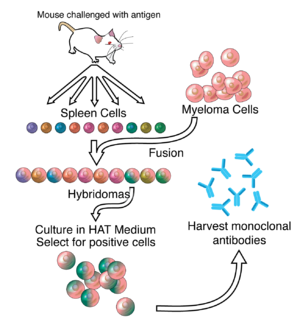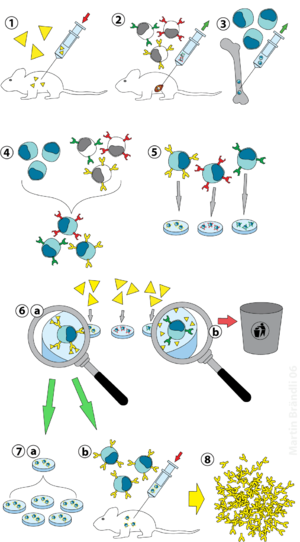Curator/Reporter: Aviral Vatsa PhD MBBS
This post is in the second part of the reviews that focuses on the current status of drug delivery to bone and the issues facing this field. The first part can be accessed here
Annual treatment costs for musculoskeletal diseases in the US are roughly 7.7% (~ $849 billion) of total gross domestic product. Such disorders are the main cause of physical disability in US. Almost half of all chronic conditions in people can be attributed to bone and joint disorders. In addition there is increasing ageing population and associated increases in osteoporosis and other diseases, rising incidences of degenerative intervertebral disk diseases and numbers of revision orthopedic arthroplasty surgeries, and increases in spinal fusions. All these factors contribute towards the increasing requirement of bone regeneration and reconstruction methods and products. Delivery of therapeutic grade products to bone has various challenges. Parenteral administration limits the efficient delivery of drugs to the required site of injury and local delivery methods are often expensive and invasive. The theme issue of Advance Drug Delivery reviews focuses on the current status of drug delivery to bone and the issues facing this field. Here is the second part of these reviews and research articles.
Abstract
An aging population in the developing world has led to an increase in musculoskeletal diseases such as osteoporosis and bone metastases. Left untreated many bone diseases cause debilitating pain and in the case of cancer, death. Many potential drugs are effective in treating diseases but result in side effects preventing their efficacy in the clinic. Bone, however, provides a unique environment of inorganic solids, which can be exploited in order to effectively target drugs to diseased tissue. By integration of bone targeting moieties to drug-carrying water-soluble polymers, the payload to diseased area can be increased while side effects decreased. The realization of clinically relevant bone targeted polymer therapeutics depends on (1) understanding bone targeting moiety interactions, (2) development of controlled drug delivery systems, as well as (3) understanding drug interactions. The latter makes it possible to develop bone targeted synergistic drug delivery systems.

2. Development of macromolecular prodrug for rheumatoid arthritis [2]
Abstract
Rheumatoid arthritis (RA) is a chronic autoimmune disease that is considered to be one of the major public health problems worldwide. The development of therapies that target tumor necrosis factor-α (TNF-α), interleukin-6 (IL-6) and co-stimulatory pathways that regulate the immune system have revolutionized the care of patients with RA. Despite these advances, many patients continue to experience symptomatic and functional impairment. To address this issue, more recent therapies that have been developed are designed to target intracellular signaling pathways involved in immunoregulation. Though this approach has been encouraging, there have been major challenges with respect to off-target organ side effects and systemic toxicities related to the widespread distribution of these signaling pathways in multiple cell types and tissues. These limitations have led to an increasing interest in the development of strategies for the macromolecularization of anti-rheumatic drugs, which could target them to the inflamed joints. This approach enhances the efficacy of the therapeutic agent with respect to synovial inflammation, while markedly reducing non-target organ adverse side effects. In this manuscript, we provide a comprehensive overview of the rational design and optimization of macromolecular prodrugs for treatment of RA. The superior and the sustained efficacy of the prodrug may be partially attributed to their Extravasation through Leaky Vasculature and subsequent Inflammatory cell-mediated Sequestration (ELVIS) in the arthritic joints. This biologic process provides a plausible mechanism, by which macromolecular prodrugs preferentially target arthritic joints and illustrates the potential benefits of applying this therapeutic strategy to the treatment of other inflammatory diseases.

3. Peptide-based delivery to bone [3]
Abstract
Peptides are attractive as novel therapeutic reagents, since they are flexible in adopting and mimicking the local structural features of proteins. Versatile capabilities to perform organic synthetic manipulations are another unique feature of peptides compared to protein-based medicines, such as antibodies. On the other hand, a disadvantage of using a peptide for a therapeutic purpose is its low stability and/or high level of aggregation. During the past two decades, numerous peptides were developed for the treatment of bone diseases, and some peptides have already been used for local applications to repair bone defects in the clinic. However, very few peptides have the ability to form bone themselves. We herein summarize the effects of the therapeutic peptides on bone loss and/or local bone defects, including the results from basic studies. We also herein describe some possible methods for overcoming the obstacles associated with using therapeutic peptide candidates.

4. Growth factor delivery: How surface interactions modulate release in vitro and in vivo [4]
Abstract
Biomaterial scaffolds have been extensively used to deliver growth factors to induce new bone formation. The pharmacokinetics of growth factor delivery has been a critical regulator of their clinical success. This review will focus on the surface interactions that control the non-covalent incorporation of growth factors into scaffolds and the mechanisms that control growth factor release from clinically relevant biomaterials. We will focus on the delivery of recombinant human bone morphogenetic protein-2 from materials currently used in the clinical practice, but also suggest how general mechanisms that control growth factor incorporation and release delineated with this growth factor could extend to other systems. A better understanding of the changing mechanisms that control growth factor release during the different stages of preclinical development could instruct the development of future scaffolds for currently untreatable injuries and diseases.

5. Biomaterial delivery of morphogens to mimic the natural healing cascade in bone[5]
Abstract
Complications in treatment of large bone defects using bone grafting still remain. Our understanding of the endogenous bone regeneration cascade has inspired the exploration of a wide variety of growth factors (GFs) in an effort to mimic the natural signaling that controls bone healing. Biomaterial-based delivery of single exogenous GFs has shown therapeutic efficacy, and this likely relates to its ability to recruit and promote replication of cells involved in tissue development and the healing process. However, as the natural bone healing cascade involves the action of multiple factors, each acting in a specific spatiotemporal pattern, strategies aiming to mimic the critical aspects of this process will likely benefit from the usage of multiple therapeutic agents. This article reviews the current status of approaches to deliver single GFs, as well as ongoing efforts to develop sophisticated delivery platforms to deliver multiple lineage-directing morphogens (multiple GFs) during bone healing.

6. Studies of bone morphogenetic protein-based surgical repair[6]
Abstract
Over the past several decades, recombinant human bone morphogenetic proteins (rhBMPs) have been the most extensively studied and widely used osteoinductive agents for clinical bone repair. Since rhBMP-2 and rhBMP-7 were cleared by the U.S. Food and Drug Administration for certain clinical uses, millions of patients worldwide have been treated with rhBMPs for various musculoskeletal disorders. Current clinical applications include treatment of long bone fracture non-unions, spinal surgeries, and oral maxillofacial surgeries. Considering the growing number of recent publications related to clincal research of rhBMPs, there exists enormous promise for these proteins to be used in bone regenerative medicine. The authors take this opportunity to review the rhBMP literature paying specific attention to the current applications of rhBMPs in bone repair and spine surgery. The prospective future of rhBMPs delivered in combination with tissue engineered scaffolds is also reviewed.

7. Strategies for controlled delivery of growth factors and cells for bone regeneration[7]
Abstract
The controlled delivery of growth factors and cells within biomaterial carriers can enhance and accelerate functional bone formation. The carrier system can be designed with pre-programmed release kinetics to deliver bioactive molecules in a localized, spatiotemporal manner most similar to the natural wound healing process. The carrier can also act as an extracellular matrix-mimicking substrate for promoting osteoprogenitor cellular infiltration and proliferation for integrative tissue repair. This review discusses the role of various regenerative factors involved in bone healing and their appropriate combinations with different delivery systems for augmenting bone regeneration. The general requirements of protein, cell and gene therapy are described, with elaboration on how the selection of materials, configurations and processing affects growth factor and cell delivery and regenerative efficacy in both in vitro and in vivo applications for bone tissue engineering.

8. Bone repair cells for craniofacial regeneration[8]
Abstract
Reconstruction of complex craniofacial deformities is a clinical challenge in situations of injury, congenital defects or disease. The use of cell-based therapies represents one of the most advanced methods for enhancing the regenerative response for craniofacial wound healing. Both somatic and stem cells have been adopted in the treatment of complex osseous defects and advances have been made in finding the most adequate scaffold for the delivery of cell therapies in human regenerative medicine. As an example of such approaches for clinical application for craniofacial regeneration, Ixmyelocel-T or bone repair cells are a source of bone marrow derived stem and progenitor cells. They are produced through the use of single pass perfusion bioreactors for CD90+ mesenchymal stem cells and CD14+ monocyte/macrophage progenitor cells. The application of ixmyelocel-T has shown potential in the regeneration of muscular, vascular, nervous and osseous tissue. The purpose of this manuscript is to highlight cell therapies used to repair bony and soft tissue defects in the oral and craniofacial complex. The field at this point remains at an early stage, however this review will provide insights into the progress being made using cell therapies for eventual development into clinical practice.

9. Gene therapy approaches to regenerating bone[9]
Abstract
Bone formation and regeneration therapies continue to require optimization and improvement because many skeletal disorders remain undertreated. Clinical solutions to nonunion fractures and osteoporotic vertebral compression fractures, for example, remain suboptimal and better therapeutic approaches must be created. The widespread use of recombinant human bone morphogenetic proteins (rhBMPs) for spine fusion was recently questioned by a series of reports in a special issue of The Spine Journal, which elucidated the side effects and complications of direct rhBMP treatments. Gene therapy – both direct (in vivo) and cell-mediated (ex vivo) – has long been studied extensively to provide much needed improvements in bone regeneration. In this article, we review recent advances in gene therapy research whose aims are in vivo or ex vivo bone regeneration or formation. We examine appropriate vectors, safety issues, and rates of bone formation. The use of animal models and their relevance for translation of research results to the clinical setting are also discussed in order to provide the reader with a critical view. Finally, we elucidate the main challenges and hurdles faced by gene therapy aimed at bone regeneration as well as expected future trends in this field.

10. Gene delivery to bone[10]
Abstract
Gene delivery to bone is useful both as an experimental tool and as a potential therapeutic strategy. Among its advantages over protein delivery are the potential for directed, sustained and regulated expression of authentically processed, nascent proteins. Although no clinical trials have been initiated, there is a substantial pre-clinical literature documenting the successful transfer of genes to bone, and their intraosseous expression. Recombinant vectors derived from adenovirus, retrovirus and lentivirus, as well as non-viral vectors, have been used for this purpose. Both ex vivo and in vivo strategies, including gene-activated matrices, have been explored. Ex vivo delivery has often employed mesenchymal stem cells (MSCs), partly because of their ability to differentiate into osteoblasts. MSCs also have the potential to home to bone after systemic administration, which could serve as a useful way to deliver transgenes in a disseminated fashion for the treatment of diseases affecting the whole skeleton, such as osteoporosis orosteogenesis imperfecta. Local delivery of osteogenic transgenes, particularly those encoding bone morphogenetic proteins, has shown great promise in a number of applications where it is necessary to regenerate bone. These include healing large segmental defects in long bones and the cranium, as well as spinal fusion and treating avascular necrosis.

11. RNA therapeutics targeting osteoclast-mediated excessive bone resorption[11]
Abstract
RNA interference (RNAi) is a sequence-specific post-transcriptional gene silencing technique developed with dramatically increasing utility for both scientific and therapeutic purposes. Short interfering RNA (siRNA) is currently exploited to regulate protein expression relevant to many therapeutic applications, and commonly used as a tool for elucidating disease-associated genes. Osteoporosis and their associated osteoporotic fragility fractures in both men and women are rapidly becoming a global healthcare crisis as average life expectancy increases worldwide. New therapeutics are needed for this increasing patient population. This review describes the diversity of molecular targets suitable for RNAi-based gene knock down in osteoclasts to control osteoclast-mediated excessive bone resorption. We identify strategies for developing targeted siRNA delivery and efficient gene silencing, and describe opportunities and challenges of introducing siRNA as a therapeutic approach to hard and connective tissue disorders.

Bibliography
[1] S. A. Low and J. Kopeček, “Targeting polymer therapeutics to bone,” Advanced Drug Delivery Reviews, vol. 64, no. 12, pp. 1189–1204, Sep. 2012.
[2] F. Yuan, L. Quan, L. Cui, S. R. Goldring, and D. Wang, “Development of macromolecular prodrug for rheumatoid arthritis,” Advanced Drug Delivery Reviews, vol. 64, no. 12, pp. 1205–1219, Sep. 2012.
[3] K. Aoki, N. Alles, N. Soysa, and K. Ohya, “Peptide-based delivery to bone,” Advanced Drug Delivery Reviews, vol. 64, no. 12, pp. 1220–1238, Sep. 2012.
[4] W. J. King and P. H. Krebsbach, “Growth factor delivery: How surface interactions modulate release in vitro and in vivo,” Advanced Drug Delivery Reviews, vol. 64, no. 12, pp. 1239–1256, Sep. 2012.
[5] M. Mehta, K. Schmidt-Bleek, G. N. Duda, and D. J. Mooney, “Biomaterial delivery of morphogens to mimic the natural healing cascade in bone,” Advanced Drug Delivery Reviews, vol. 64, no. 12, pp. 1257–1276, Sep. 2012.
[6] K. W.-H. Lo, B. D. Ulery, K. M. Ashe, and C. T. Laurencin, “Studies of bone morphogenetic protein-based surgical repair,” Advanced Drug Delivery Reviews, vol. 64, no. 12, pp. 1277–1291, Sep. 2012.
[7] T. N. Vo, F. K. Kasper, and A. G. Mikos, “Strategies for controlled delivery of growth factors and cells for bone regeneration,” Advanced Drug Delivery Reviews, vol. 64, no. 12, pp. 1292–1309, Sep. 2012.
[8] G. Pagni, D. Kaigler, G. Rasperini, G. Avila-Ortiz, R. Bartel, and W. V. Giannobile, “Bone repair cells for craniofacial regeneration,” Advanced Drug Delivery Reviews, vol. 64, no. 12, pp. 1310–1319, Sep. 2012.
[9] N. Kimelman Bleich, I. Kallai, J. R. Lieberman, E. M. Schwarz, G. Pelled, and D. Gazit, “Gene therapy approaches to regenerating bone,” Advanced Drug Delivery Reviews, vol. 64, no. 12, pp. 1320–1330, Sep. 2012.
[10] C. H. Evans, “Gene delivery to bone,” Advanced Drug Delivery Reviews, vol. 64, no. 12, pp. 1331–1340, Sep. 2012.
[11] Y. Wang and D. W. Grainger, “RNA therapeutics targeting osteoclast-mediated excessive bone resorption,” Advanced Drug Delivery Reviews, vol. 64, no. 12, pp. 1341–1357, Sep. 2012.
Like this:
Like Loading...
Read Full Post »

























